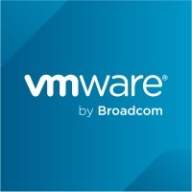


Perforce Puppet and VMware Aria Automation are products in IT automation and management. VMware Aria Automation is notably superior due to its advanced features.
Features: Perforce Puppet is valued for its reliable configuration management, seamless cross-platform integration, and strong automation capabilities with an agent-based feature that aids in system management. VMware Aria Automation is praised for its self-service IT delivery and robust automation features that support complex multi-cloud environments.
Room for Improvement: Perforce Puppet could benefit from enhanced user interface design, more comprehensive cloud service integrations, and improvements in real-time reporting capabilities. VMware Aria Automation could improve its API functionalities, simplify the complexity of its configuration processes, and enhance its documentation for better user understandability.
Ease of Deployment and Customer Service: VMware Aria Automation provides sophisticated deployment catering to large enterprises, supported by extensive customer service. Perforce Puppet offers quick and flexible deployment suitable for diverse IT structures, backed by strong technical assistance focused on user-specific needs.
Pricing and ROI: Perforce Puppet is known for cost-effectiveness, providing significant ROI through efficient infrastructure management at a lower cost. VMware Aria Automation, despite its higher initial investment, offers ROI through its advanced features which reduce long-term operational expenses. It suits enterprises focusing on strategic long-term investments while Puppet is ideal for budget-conscious projects seeking swift ROI.
| Product | Market Share (%) |
|---|---|
| Microsoft Intune | 8.2% |
| VMware Aria Automation | 5.5% |
| Perforce Puppet | 2.9% |
| Other | 83.4% |


| Company Size | Count |
|---|---|
| Small Business | 120 |
| Midsize Enterprise | 47 |
| Large Enterprise | 153 |
| Company Size | Count |
|---|---|
| Small Business | 10 |
| Midsize Enterprise | 1 |
| Large Enterprise | 4 |
| Company Size | Count |
|---|---|
| Small Business | 32 |
| Midsize Enterprise | 24 |
| Large Enterprise | 130 |
Microsoft Intune provides centralized management of mobile devices and applications, ensuring security, compliance, and productivity through integration with Microsoft services like Microsoft 365 and Azure Active Directory.
Organizations use Intune for managing mobile devices and applications, enhancing security and compliance across platforms. With features like single sign-on, conditional access, and zero-touch deployment via Autopilot, it facilitates efficient operations. Intune's scalability, easy enrollment, and capabilities such as remote wipe support diverse device management, offering robust data protection and efficient operation. Despite its features, improvement areas include reporting, compatibility with non-Microsoft devices, and better support for macOS and Linux devices.
What are the key features of Microsoft Intune?
What benefits should users look for in reviews?
In industries such as finance, healthcare, and education, Microsoft Intune is implemented to ensure secure and compliant device management. Companies leverage its capabilities to deploy security policies and manage both corporate-owned and BYOD environments, facilitating a unified approach to data protection and compliance.
Perforce Puppet provides robust features for configuration management, compatible with Linux, Windows, and UNIX. It simplifies infrastructure management with automation and role-based access control, though it requires mastering command-line operations due to limited GUI.
Perforce Puppet utilizes a hub-spoke architecture to enhance automation across production environments, excelling in provisioning and configuration management for on-prem servers. Its infrastructure as code approach eases deployment and maintenance, supported by community resources for stabilization. Support for diverse devices makes it adaptable for complex configurations, but pricing and integration gaps, especially with Infosec tools, pose challenges for some.
What are the key features of Perforce Puppet?Puppet is implemented across industries for managing production servers, especially in regulated environments. Its security compliance checks ensure adherence to required standards, while public configurations assist in device network integration. Industries benefit from its ability to streamline Linux server automation and explore expansion into Windows systems to meet cross-platform requirements.
VMware Aria Automation is a cloud management tool that allows companies to simplify their cloud experience through a modern automation platform. The solution is designed to deliver self-service clouds, multi-cloud automation with governance, and DevOps-based security and infrastructure management. It helps organizations improve IT agility, efficiency, and productivity through its various features.
VMware Aria Automation has multiple use cases that include the following:
VMware Aria Automation Features
VMware Aria Automation has various features that allow users to easily perform operations. Some of the solution's capacities include:
VMware Aria Automation Benefits
VMware Aria Automation offers its users various benefits. Some of the biggest advantages that the solution brings to companies that utilize it include:
Reviews from Real Users
Awais J., CTO/CEO at a tech services company, likes VMware Aria Automation because it saves a lot of time, provides more visibility, and has extensive automation capabilities.
An IT consultant at a government rates VMware Aria Automation highly because the product gives you flexibility to analyze and consume resources.
We monitor all Configuration Management reviews to prevent fraudulent reviews and keep review quality high. We do not post reviews by company employees or direct competitors. We validate each review for authenticity via cross-reference with LinkedIn, and personal follow-up with the reviewer when necessary.